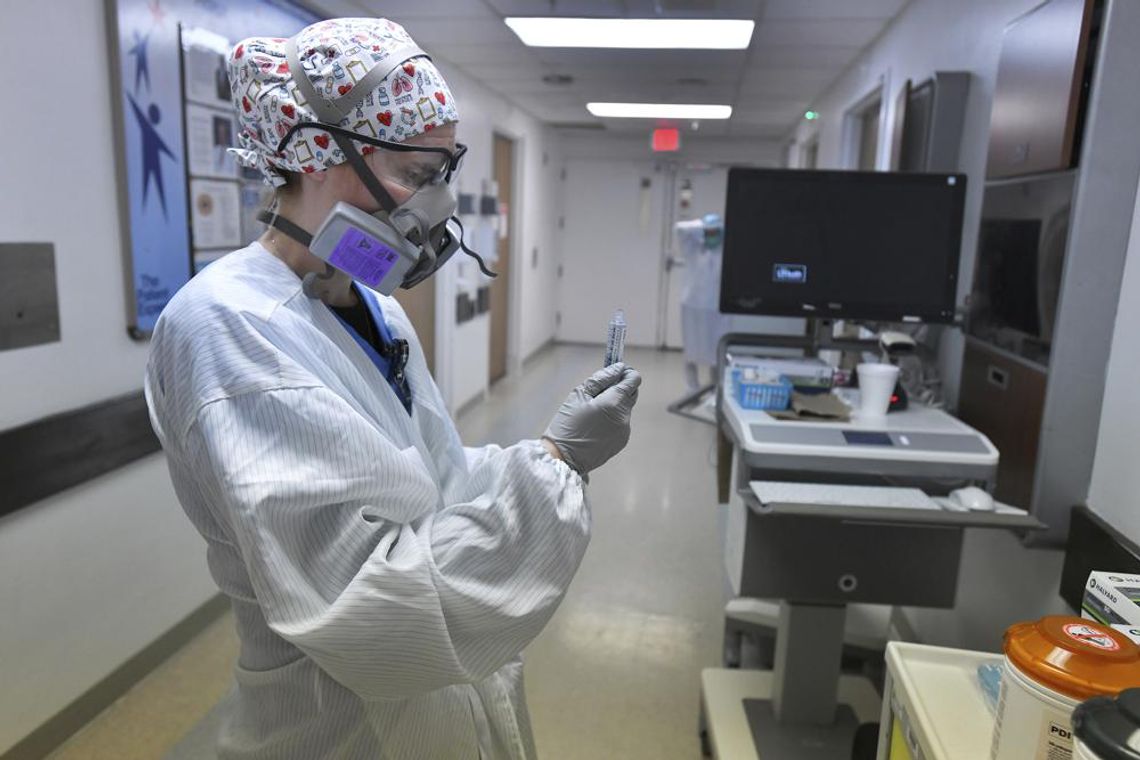By Sahar Chmais
The hospital entrance is deceptive; aside from COVID screening questions, everything is normal and calm. But behind the main doors, especially where COVID-19 patients stay, there is tension, tables outside rooms holding special equipment and air purifiers, according to Teri, a registered nurse.
“As a nurse, I’ve held a lot of hands of people who have passed away,” said Teri, now a discharge planner at a Hays County hospital. “When your patient is somebody who has lived a long and wonderful life, it’s a blessing to hold their hand. I can’t imagine what it’s like to do that to somebody who is 35 or 42.”
Climbing infection rates have not only affected COVID-19 patients, but they have exhausted hospital staff and strained access to other medical needs. There is a demand for nearly 24,000 nurses across Texas, according to the Texas Workforce Commission. Hospitals are rejecting patients and sometimes unable to care for emergencies. There is also a bottle neck on discharging patients to after-care facilities.
The matter of COVID-19 hospitalizations is not the only reason people should care about the rise in cases, Teri said.
“Even if you don’t get infected with COVID… you still run the chance of needing a gallbladder removed, or may have a family member who has a heart attack or get into a car wreck,” she explained.
Teri’s hospital has had to go on diversion due to limited bed availability. Hospitals sometimes notify emergency services that they cannot bring a patient and they must go to another place. This usually happens for a span of a few hours until they can free up space.
Additionally, Governor Greg Abbott reached out to the Texas Hospital Association, asking hospitals to voluntarily postpone elective medical procedures.
In Trauma Service Area O (TSA-O), the hospitals that serve 11 counties including Hays and Travis, only had two ICU beds available on Aug. 30 – 51% of the 513 beds are being used to serve COVID-19 patients. Additionally, 19% of the 3,524 hospitalizations are due to the virus.
The number of total beds available fluctuates daily because it depends on staff availability. Last week, Abbott announced that the Department of State Health Services (DSHS) will deploy medical staff to hospitals and nursing homes, from the 5,600 he previously called on, to 8,100 employees.
In the Capital Area and Rural Capital Area, which includes Hays and Travis counties, there were over 2,400 unfilled nursing positions.
“This latest COVID-19 spike is putting extraordinary pressure on our hospitals, emergency departments and healthcare professionals,” reads a joint statement from Ascension Seton and Baylor Scott & White. “The vast majority of the patients we are treating for COVID-19 are unvaccinated, and the rising number of cases is discouraging.”
Lack of hospital staff has not only caused stress on the employees, but it has also created a bottle neck in discharging patients in need of after care.
When certain patients leave the hospital, they must go to a rehabilitation facility or some type of care after discharge. Those facilities were hit hard with the pandemic, Teri said. Before patients get discharged to these facilities, they need to test negative for COVID-19. Then there is the matter of finding available space, but a lot of rehabilitation centers have unavailable or limited room due to the virus.
Limitations at these places could be due to unfilled positions, sick nurses or only placing one patient per room instead of two as a safety precaution. Getting people the proper care has been a nightmare, according to Teri.
Patients also sometimes need walkers and oxygen tanks after discharge, but the demand has soared for these supplies. Teri said she has had to work harder to secure these supplies and services with the higher demand.
While there have been a few days when the numbers appear to stabilize, Teri said she is not sure if that is due to an admissions slow down or it is caused by people’s deaths.
From Teri’s experience, the third surge has been the worst.
“There seems to be so much push back about doing what you need to protect your community,” she said. “It seems that so many people are focused on ‘me and mine’ that they forget we are a community.”
She also finds it disheartening that people listen to medical experts about taking medication for conditions such as blood pressure, but they do not place that same faith in vaccination.
Many health care professionals and politicians have been encouraging residents to get vaccinated. Although Abbott recently issued an order prohibiting government entities from mandating COVID-19 vaccinations, he encourages residents to get their vaccines.
“Texans can do their part to reduce the spread of COVID-19 and hospitalizations by getting the vaccine,” he said. “It’s safe, effective, and your best defense against COVID-19. Visit covidvaccine.texas.gov to find a vaccine provider near you.”











